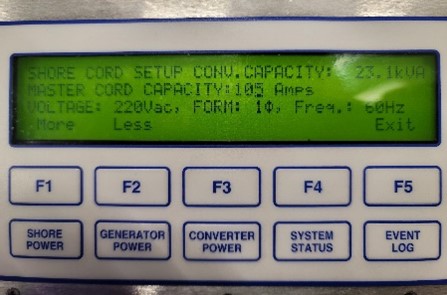Yachting across continents is an exhilarating experience, but it presents unique challenges, especially when managing varying shore power standards. European marinas typically provide high-voltage, three-phase power (e.g., 400V), while U.S. marinas often offer lower-voltage, single-phase power (e.g., 208V or 240V). These differences can strain a yacht’s electrical systems, which are often configured for the region where the vessel was built. Without proper adjustments, connecting to a lower-voltage source can lead to tripped breakers, overheated shore cords, and even damage to onboard systems.
UNDERSTANDING VOLTAGE AND CURRENT DISCREPANCIES
Imagine a yacht equipped with a 400V three-phase shore power input rated for 100 amps. This setup is sufficient for powering all onboard systems with balanced current flow and lower amperage. However, when docked at a U.S. marina with 240V single-phase power at 100 amps, the same yacht faces a significant reduction in available power.
In Europe, the power delivered by a 400V three-phase connection is calculated as:
Power = √3 × Voltage × Current = 1.732 × 400V × 100A = 69.3kW
In contrast, at 240V single-phase, the power drops to:
Power = Voltage × Current = 240V × 100A = 24 kW
This results in a third of the available power compared to the European setup. Attempting to draw more power would require a higher current, potentially overloading the shore cord, dock pedestal, or yacht’s input breakers.
ASEA SHORE POWER CONVERTERS: SOLUTIONS FOR COMPATIBILITY CHALLENGES
Shore Cord Alarm: Managing Current Draw: ASEA’s Shore Cord Alarm allows operators to limit the current drawn from the dock. This functionality ensures the shore cord and input breakers are not overloaded, safeguarding both the dock and the yacht’s infrastructure.



For instance, when docked at a U.S. marina supplying 240V single-phase at 100 amps, the Shore Cord Alarm can be set to restrict current draw to within safe limits. While this ensures system protection, it also necessitates prioritizing essential loads—like navigation systems, lighting, or refrigeration—over non-essential systems such as air conditioning.
Operators can make these adjustments at the main distribution panel, allocating power where it’s most critical. This practical solution balances safety with functionality, ensuring seamless operations even with limited power.
Upgrading Input Wiring and Breakers: For yachts requiring full power across all systems, upgrading input wiring and breakers to handle higher current loads at lower voltages is an option. This solution enables the yacht to draw sufficient power, but it comes with challenges:
- Cost and Complexity: Upgrading marine-grade wiring and breakers requires skilled technicians and high-quality materials, making it a costly endeavor.
- Downtime: The process may necessitate extended dock stays, disrupting travel schedules.
- Incompatibility Upon Return: When the yacht returns to regions with higher voltage supplies, the rewired system may require recalibration or even further modifications, as current requirements will shift again.
This approach is ideal for yachts with consistent docking patterns in lower-voltage regions but requires careful planning and investment.
Balancing the Variables
Shore power compatibility during cross-continent travel is not a one-size-fits-all challenge. Each yacht must balance its operational needs, regional constraints, and logistical considerations. By leveraging ASEA’s Shore Cord Alarm and understanding the implications of upgrading input wiring, operators can make informed decisions to ensure reliable power delivery.
Ultimately, ASEA Power Systems with a wide range of input voltage and frequency provides flexibility to connect to new destinations while protecting onboard systems. Whether limiting current draw or considering infrastructure upgrades, these solutions help maintain safety, efficiency, and operational excellence, no matter where the voyage leads.
For further assistance, download our Power Rating Table to better understand the current and voltage requirements for your yacht’s specific configuration.

